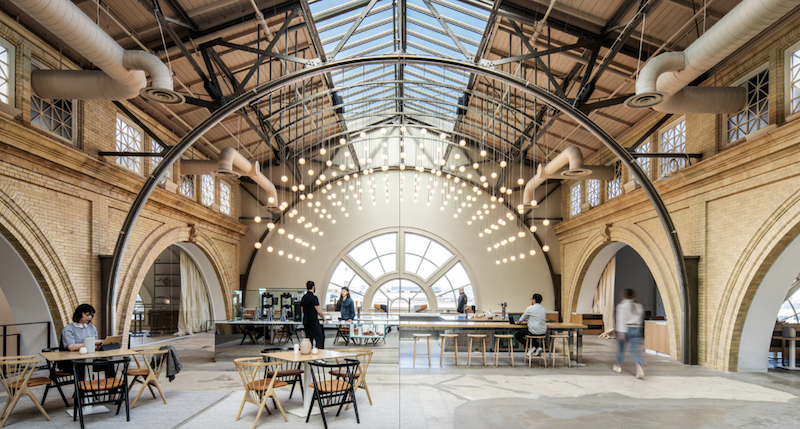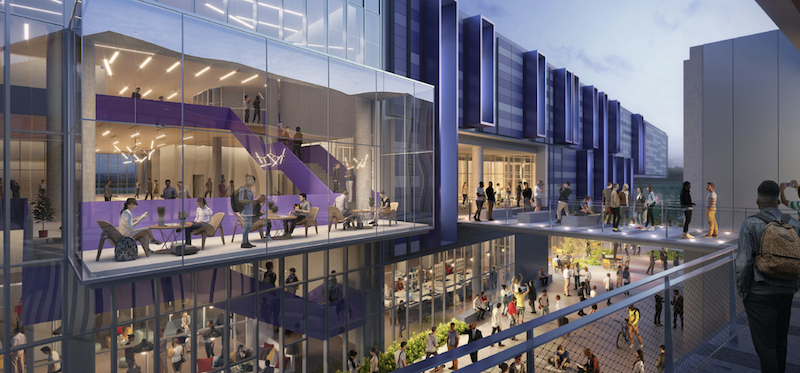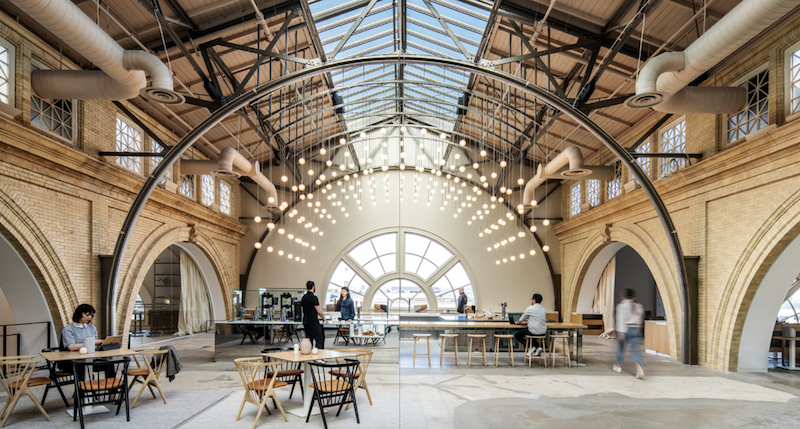How Gensler responded to such seismic events as the coronavirus pandemic, climate change, and social inequality dominates its newly released Annual Report 2020.
Titled “A Time For Transformation,” the 101-page report catalogues how the industry’s largest architecture firm—whose revenue totaled $1.55 billion last year, its 55th in business—has addressed events that, sometimes, were beyond its control.
To keep its projects moving during the pandemic, Gensler moved more than 8,000 to the cloud to allow for ongoing digital collaboration. Its post-pandemic strategies included surveying 2,300 of its employees about working from home (70% of whom said they’d prefer to work in the office the majority of the week); polling residents in four cities—New York, San Francisco, London, and Singapore—last May about their COVID-19 related concerns (one finding: people with children are at least 1.5-times more likely to want to move someplace safer); and posting a steady stream of articles and blogs about this topic.
“The key theme of our thought leadership [is] we must have a new understanding of global wellness that must include social justice, equity and inclusion,” the report states. To that end, the company is following five strategies to fight racism: increase its internal diversity, pursue equitable design solutions, expanding its scholarship program and mentoring of middle and high schoolers, create more job opportunities for Black professionals, and partner with clients on diversity and inclusion initiatives.
Gensler’s Global Race and Diversity Committee, comprised of 22 leaders, oversees the execution of these strategies, and connects with regional committees to amplify the firm’s impact.
The firm is also “doubling down” on its commitment to climate action. In 2019, Gensler professionals worked on more than 7,000 projects representing over 1.5 billion sf of space. Its portfolio that year is designed to save over 16 million metric tons of CO2 emissions, and the firm’s goal is to get to 30 million, and ultimately carbon neutrality within the decade.
LEANING MORE ON TECHNOLOGY
Like most AEC firms, Gensler now champions the application of technology in its design process. The report talks about the firm’s various design tools that include Intelligent Places (which uses data to connect human behavior with space design), inFORM ECOSYSTEM and gblox (which help clients make informed decisions), and its Digital Experience Design service that connects digital and physical design.
Technology also facilitated a month-long global charrette that Gensler opened to everyone in the firm. This is now an ongoing charrette platform.
DESIGN AND COMMUNITY SERVICE HIGHLIGHTED

A confidential technology coworking site in San Francisco's Ferry Building emphasizes the role design plays in human interaction.
Much of the annual report is devoted to highlighting Gensler’s recent projects and concepts. These include a technology coworking site in San Francisco’s Ferry Building that is designed to encourage human connections; Universal Creative Square in Beijing, where Gensler transformed a warehouse into a vibrant office building; and the firm’s concept for Verizon’s Hidden Ridge in Irving, Texas, a 150-acre corporate district that blends three corporate campuses with a mixed-use neighborhood composed of housing, retail and offices, all connected by light rail.
The report calls attention to Gensler’s 15 Design Excellence Award winners in 2019, and its nine Research & Innovation award winners in 2020.
Gensler also touches on how the firm and its employees gave back to their communities. Those efforts included:
•Volunteer fabricators in 22 cities created 3,047 face shields and 1,996 specialty PPE parts that were donated to healthcare workers in U.S. and Costa Rica.
•The firm announced a call to action for each of its 50 offices worldwide to create a measurable change toward equitable housing options beginning in fiscal 2021.
•Its Community Impact model organizes philanthropic and volunteer efforts that target four areas: housing and homelessness, health and wellness, the environment, and the next generation.
Related Stories
| Aug 11, 2010
'Flexible' building designed to physically respond to the environment
The ecoFLEX project, designed by a team from Shepley Bulfinch, has won a prestigious 2009 Unbuilt Architecture Design Award from the Boston Society of Architects. EcoFLEX features heat-sensitive assemblies composed of a series of bi-material strips. The assemblies’ form modulate with the temperature to create varying levels of shading and wind shielding, flexing when heated to block sunlight and contracting when cooled to allow breezes to pass through the screen.
| Aug 11, 2010
New book provides energy efficiency guidance for hotels
Recommendations on achieving 30% energy savings over minimum code requirements are contained in the newly published Advanced Energy Design Guide for Highway Lodging. The energy savings guidance for design of new hotels provides a first step toward achieving a net-zero-energy building.
| Aug 11, 2010
Perkins+Will master plans Vedanta University teaching hospital in India
Working together with the Anil Agarwal Foundation, Perkins+Will developed the master plan for the Medical Precinct of a new teaching hospital in a remote section of Puri, Orissa, India. The hospital is part of an ambitious plan to develop this rural area into a global center of education and healthcare that would be on par with Harvard, Stanford, and Oxford.
| Aug 11, 2010
Burt Hill, HOK top BD+C's ranking of the nation's 100 largest university design firms
A ranking of the Top 100 University Design Firms based on Building Design+Construction's 2009 Giants 300 survey. For more Giants 300 rankings, visit http://www.BDCnetwork.com/Giants
| Aug 11, 2010
PBK, DLR Group among nation's largest K-12 school design firms, according to BD+C's Giants 300 report
A ranking of the Top 75 K-12 School Design Firms based on Building Design+Construction's 2009 Giants 300 survey. For more Giants 300 rankings, visit http://www.BDCnetwork.com/Giants
| Aug 11, 2010
Turner Building Cost Index dips nearly 4% in second quarter 2009
Turner Construction Company announced that the second quarter 2009 Turner Building Cost Index, which measures nonresidential building construction costs in the U.S., has decreased 3.35% from the first quarter 2009 and is 8.92% lower than its peak in the second quarter of 2008. The Turner Building Cost Index number for second quarter 2009 is 837.








